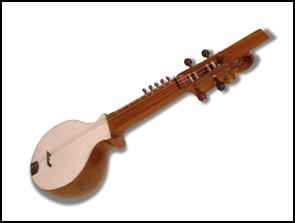

Merciful and grants all the pleasures of the heavens. He possesses no material things nor has He an army. He is the king of kings who is guiding us all the time. He grants peace and security and is always merciful in forgiving He is merciful and delivers us from this world. My rendition of this piece contains the first component of the letter which is the supplication to God as well as the primary couplet above. This prophecy was fulfilled within less than a hundred years as the Sikhs established a Kingdom that encompassed all of the Punjab (both in present day India and Pakistan), Kashmir, the North West Frontier Province, the Khyber Pass and Kabul through engagement in offensive war and territorial expansion. The meaning of this couplet is essentially that because Aurangzeb broke his Quranic oath, it then becomes not only righteous but "just" for Guru Gobind Singh Ji to engage in warfare with the Moghals. It is permissible (halal) in the eyes of God for me to take my sword in hand. Now that all other means of rectifying the situation have failed, In this letter Guru Gobind Singh Ji begins with a supplication to God, and the moves to address the breaking of Aurangzeb's Quranic oath. Subsequently after the attack his two younger sons, Baba Zorowar Singh and Baba Fateh Singh were captured and bricked alive. This battle has been alluded to as a symbolism to the Battle of Karbala as it was here at Chamkaur that Guru Gobind Singh Ji lost his two older sons in battle, Baba Ajit Singh, and Baba Jujhar Singh. Guru Gobind Singh Ji was able to escape and penned this letter to Aurangzeb in the aftermath. Aurangzeb had given the King of the Sikhs his written oath on a Quran that Guru Gobind Singh Ji would have safe passage out of the area, but instead the 42 Sikhs were sieged upon by Moghal forces. The Zafarnama is a letter written in classical Persian (Farsi) by the 10th King of the Sikhs "Shah-e-Shahenshah, Bhadshah Darvesh, Sache Pateshah, Guru Gobind Singh Ji Maharaj" to the Moghal King "Aurangzeb" in 1705 after the "Battle of Chamkaur."Īt the Battle of Chamkaur, 42 Sikhs including the King Guru Gobind Singh Ji and his 4 sons fought against tens of thousands of Moghal soldiers. He holds a PhD in Ethnomusicology from the University of Alberta where his research focused on the relationship between Sikhism and Islam as well as the deep connections between East and West Punjab. Arsh Khaira is fluent in Dari (Afghan Farsi) and has been studying the language in great detail since 2006. However, combined with mishrit raags, that total is 60.Dr. The Guru Granth Sahib is thought by many to have just 31 raags or melodies which is correct of single raags. Each melody sets a particular mood for the hymn, adding a deeper dimension to it. There are a total of 60 raags or melodies within the Guru Granth Sahib. A mood can be created by the music of the raag regardless of the time of day.

Raags are used in Sikh music simply to create a mood, and are not restricted to particular times. The name of raags ending with the word Dakhani are not mishrit raags because Dakhani is not a raag it simply means 'in south Indian style'.

Asavari Sudhang/Komal Rishabh Asavari -369 All raags in the Guru Granth Sahib Ji are named raag.įollowing is the list of all sixty raags (including 31 main raags and 29 mishrit raags) under which Gurbani is written, in order of appearance with page numbers.Ģ0. Each raga is a chapter or section in the Guru Granth Sahib starting with Asaa raag, and all the hymns produced in Asaa raag are found in this section ordered chronologically by the Guru or other Bhagat that have written hymns in that raga. This is a combination of 31 single raags and 29 mixed (or mishrit) raags (a raag composed by combining two or three raags together). The Sikh holy scripture, Guru Granth Sahib Ji, is composed in and divided into a total of 60 ragas.
#Rabab sikhiwiki how to#
It is a set of rules of how to build a melody which can ignite a certain mood in the reciter and listeners. A raga or raag is a complex structure of musical melody used in Indian classical music.


 0 kommentar(er)
0 kommentar(er)
